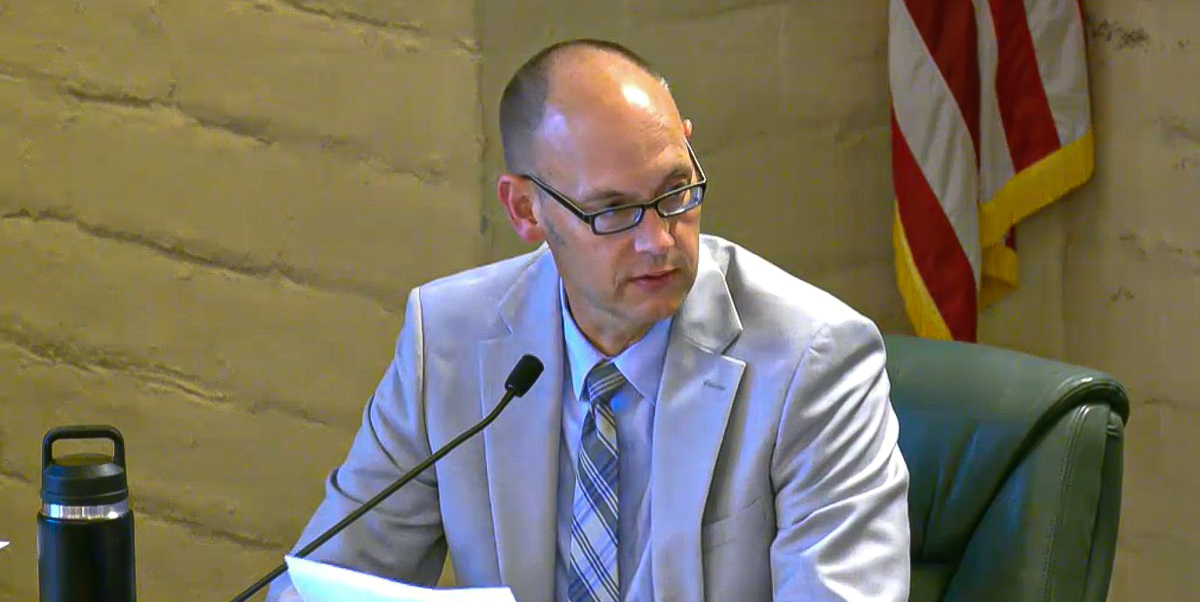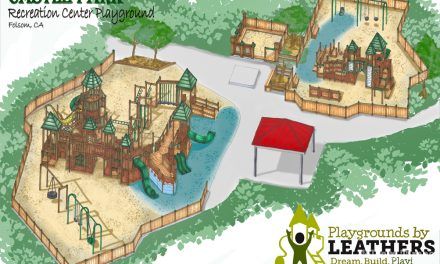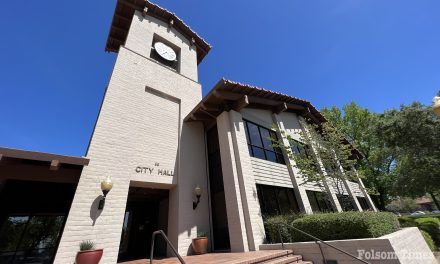Council approves departmental restructuring and funding shifts expected to save nearly $4 million this year and beyond
FOLSOM — After months of analysis, public workshops, and difficult choices, the Folsom City Council on Tuesday approved the second phase of its General Fund cost-saving plan — a broad departmental reorganization intended to close a roughly $3 million shortfall while maintaining essential services and stabilizing the city’s finances.
The move completes a process that began last spring, when the city’s draft 2025–26 budget projected $119,988,604 in total resources — $114,442,459 in base revenues plus $5,546,145 in transfers in — against $123,479,153 in total uses, including $121,877,171 in expenditures and $1,601,982 in transfers out. To preserve services at that time, the city planned to draw $3,490,549 from unassigned fund balance, then narrowed the gap to about $3 million on June 24 with mid-cycle adjustments and a directive to staff: return in the fall with structural fixes, not one-time patches.
Tuesday’s approval delivers those fixes. Building on the first phase adopted in late September, the newly approved phase reorganizes four major departments — Community Development, Parks and Recreation, Public Works, and the expanded Utilities Department — to shift eligible costs to special-revenue and enterprise funds, streamline roles, and strengthen cost recovery. In total, the plan eliminates 18 positions citywide, largely through vacancy eliminations, reclassifications, and shared assignments, and reduces General Fund-supported staffing from 112.55 to 95.55 full-time equivalents (FTE), while increasing positions funded by other sources from 131.90 to 150.45 FTE. The realignment yields $2,318,473 in full-year General Fund salary and benefit savings for FY 2026–27; because the changes take effect midyear, the city projects $1,159,236 in the current FY 2025–26.
City Manager Bryan Whitemyer framed the vote as the culmination of a promise made when the budget was adopted. “When that budget was adopted, staff had indicated to the community and to the council that we would look at ways to expeditiously try to find ways to cut that gap,” he said. “For the last several months, a lot of work has been done.” He acknowledged the human cost of the process. “Our employees, our people are the most important aspects of what we do. They interface with the public. They build the projects. They provide the service… it’s not fun,” he said of telling long-serving staff their positions would not continue.
Department by department, the savings are specific and recurring. Community Development remains at 28 positions but moves funding for 2.75 FTE from the General Fund to the Housing and Tree Funds, reflecting the Housing Manager’s 100 percent housing workload and partial allocations for two additional roles, including time overseeing the Seniors Helping Seniors program.
Along with consolidating and underfilling select mid-management duties in development engineering and code enforcement, the changes save $493,011 annually — about nine percent of the department’s adopted salary-and-benefit budget. “The proposed solutions represent weeks of collaboration… how we look at efficiencies, focus on our core competencies, and come up with a proposal that reduces cost but still preserves the integrity of the services we’re providing,” Director Pam Johns told the council.
Parks and Recreation saves $703,571 annually by eliminating a vacant recreation coordinator and replacing it with a shared capital-projects manager to be split with Public Works, and by charging more staff time to project and park-development impact-fee sources. Director Kelly Gonzalez said the department is “looking to increase our cost recovery using special revenue funds for staff and our services,” while protecting the amenities residents value — parks, trails, fields, and youth sports.
Fee updates approved earlier this year for the Zoo Sanctuary and community rentals are projected to generate more than $300,000 annually beginning in FY 2025–26, with a comprehensive Book of Fees update targeted for January 2026. Parks and Recreation currently manages more than 50 community partnerships that provided 31,938 volunteer hours last year, saving the city over $1 million; the goal is to increase that support by 10 to 15 percent through two new maintenance partnerships and the community-build at Kids Play Park (Castle Park).
Public Works produces the largest single reduction to the General Fund: $1,111,137 annually — roughly a 22 percent drop in the department’s General Fund impact. By recovering staff time on capital and maintenance work through Measure A, SB-1, state and federal grants, and developer sources, General Fund-supported staffing drops from 28.55 to 16.10 FTE, with 14.90 FTE funded by special revenues. “We’re kind of unique… we have the ability to generate our own revenue through capital project deliveries, acquiring grants, and utilizing special revenue funds,” Director Rebecca Neves said, adding that a streets operations manager and an administrative assistant will be based at the corporation yard to better support field crews and project delivery.
The former Environmental & Water Resources organization is now a unified Utilities Department, combining enterprise-funded water, wastewater, solid waste, recycling, and fleet services under one management structure. While the General Fund savings are modest — $10,754 — Director Marcus Yasutaki said the organizational gain is significant. “We’re going from water and wastewater at 61 positions to water, wastewater, solid waste, and fleet combined at 135,” he said. “It’s really about combining all the enterprise funds and fleet into one cohesive department.”
Two operational moves supplement the staffing savings this year: a one-time $615,000 transfer to the General Fund tied to a discounted land sale in the Housing Fund, and shifting Prospector Park maintenance costs to Community Facilities District 18 for $52,200 in annual General Fund savings. The city is also continuing an interim managed-services agreement with Mid-Valley IT that provides broader coverage at a lower net cost than maintaining two internal positions — about $80,000 less when annualized ($271,200 this year; $406,800 in a full year) — figures already netted into the savings totals.
Public testimony largely supported the plan’s transparency and focus while pressing the city to protect frontline amenities. Bruce Cline of Friends of Folsom Parkways praised the “collaboration” and “latitude” in the reorganization but cautioned that “there are millions upon millions of deferred maintenance in parks and on our trails.” Folsom Athletic Association President Rich Francis, speaking for 18 youth sports organizations and two adult leagues — roughly 18,000 participants and families — urged the city to keep parks, fields, and trails well funded. “Please do your best to keep our beautiful parks, sports facilities, and trails as well funded as you can,” he said, offering to partner on “out-of-the-box solutions” such as hosting more youth tournaments to bring in revenue.
Parks and Recreation Commissioner and FAA board member Dean Williams said the openness of the process is rebuilding trust. “Nothing’s off the table… let’s just figure out how to get there,” he said. “With the clarity and transparency that we’re seeing, and making the hard cuts but showing that we’re trying to figure a way around this, I think it will pay off for our city in the long run.” Resident Loretta Hettinger echoed that optimism but warned of revenue headwinds: “how long is it going to be before the declining sales tax revenue puts us right back in the same position?” Whitemyer acknowledged the “yo-yo effect” of cutting costs against inflation and labor pressures. “It’s still going to be a challenge,” he said. “We will ultimately be better off… and that’s why we will continue to have budget discussions.”
With Tuesday’s decision, total General Fund reductions across both phases are projected at $3,981,166 in FY 2025–26 and $5,684,065 on an ongoing annual basis beginning in FY 2026–27. For most residents, the changes should be largely invisible — parks open, permits processed, streets maintained — but behind the scenes, departments will share staff more strategically, bill eligible work to project and enterprise funds, and maximize cost recovery to keep expenditures aligned with revenues. “This process hasn’t been easy,” Whitemyer said in closing, “but it’s been thoughtful, transparent, and necessary to keep Folsom strong.”
Copyright © 2025, Folsom Times, a digital product of All Town Media LLC. All rights reserved. No portion of this publication may be reproduced, distributed, or transmitted in any form or by any means, without the prior written permission of the publisher.




